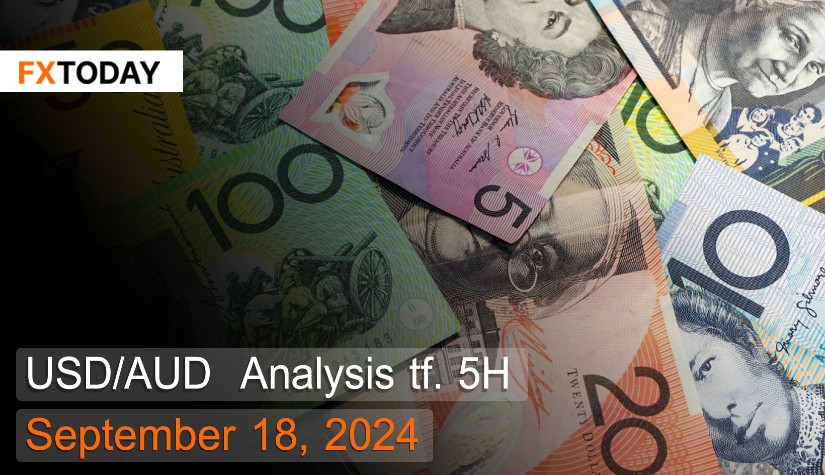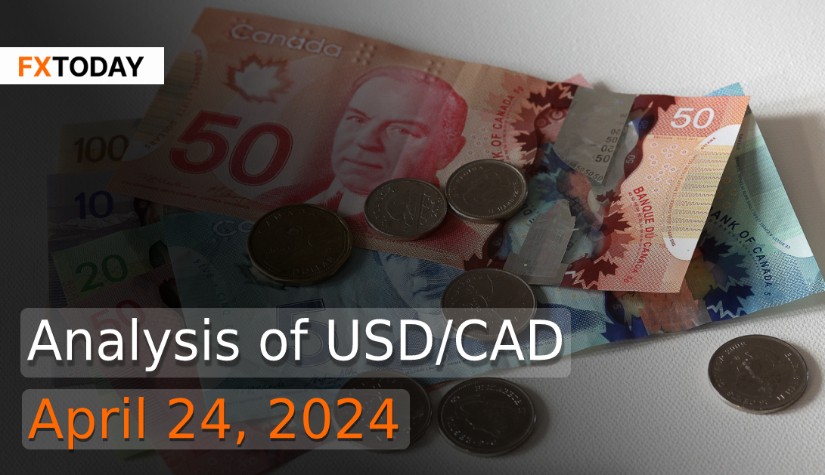The Reserve Bank of Australia (RBA) may decide to maintain interest rates for an extended period.
The Australian dollar has strengthened again ahead of the Federal Reserve's (Fed) interest rate cut decision at tomorrow's meeting, which would be the first reduction since 2020. The market anticipates a 65% chance that the Fed will cut interest rates by 50 basis points, a significant increase from the 25% forecast last month, despite better-than-expected U.S. retail sales data. Additionally, rising commodity prices have supported the Australian dollar, as Australia is a major exporter of metals and energy.
At the same time, investors are closely monitoring the Australian employment data set to be released this week to assess the domestic labor market and the RBA's monetary policy outlook. If the employment data falls short of expectations, RBA policymakers may still hold rates steady, even if the Fed reduces its interest rates.
Australia's leading economic index fell 0.1% in August, after remaining flat for four consecutive months. According to data, annual growth projections for the next 3 to 9 months decreased to -0.27 in August. Matthew Hassan, Australia's head of macroeconomic forecasting, said that Australia’s economic growth remains below average and is expected to stay subdued through the first half of 2025. Furthermore, it is anticipated that the RBA may keep interest rates unchanged for an extended period due to persistently high inflation.
Consumer confidence dropped by 0.5% to 84.6 in September, marking the sixth decline this year, amid ongoing economic uncertainty. The weaker-than-expected Q2 GDP growth has caused households to feel less confident about their current job security, potentially leading to workforce reductions as companies aim to cut costs. Additionally, rising living expenses, including essential costs, have led to decreased savings.
Australia’s labor market remains tight compared to historical levels, but it has begun to ease. The unemployment rate increased to 4.2% in July, up from last year’s low of 3.5%. Sarah Hunter, Deputy Governor of the RBA, stated that unemployment is expected to rise gradually as population growth outpaces job creation, causing companies to reduce working hours. She also noted that labor market easing will impact wage growth, which could enhance inflation control efforts.
Techical analysis data (5H)
Resistance: 1.479, 1.4807, 1.4828
Source: Investing.com
Buy/Long 1: If the price touches support in the price range of 1.4733 - 1.4753 but cannot break the support at 1.4753, you may set a TP at approximately 1.4807 and SL at around 1.4716 or according to your acceptable risk.
Buy/Long 2: If the price breaks the resistance in the price range of 1.479 - 1.4807, you may set a TP at approximately 1.4828 and SL at around 1.4733 or according to your acceptable risk.
Sell/Short 1: If the price touches resistance in the price range of 1.479 - 1.4807 but cannot break the resistance at 1.4733, you may set a TP at approximately 1.479 and SL at around 1.4828 or according to your acceptable risk.
Sell/Short 2: If the price breaks the support in the price range of 1.4733 - 1.4753, you may set a TP at approximately 1.4716 and SL at around 1.4807 or according to your acceptable risk.
Pivot point September 18, 2024 10:24 PM. GMT+7
|
Name
|
S3
|
S2
|
S1
|
Pivot Points
|
R1
|
R2
|
R3
|
| Classic | 1.4716 | 1.4733 | 1.4753 | 1.477 | 1.479 | 1.4807 | 1.4828 |
| Fibonacci | 1.4733 | 1.4747 | 1.4756 | 1.477 | 1.4784 | 1.4793 | 1.4807 |
| Camarilla | 1.4764 | 1.4767 | 1.477 | 1.477 | 1.4777 | 1.4781 | 1.4784 |
| Woodie's | 1.4718 | 1.4734 | 1.4755 | 1.4771 | 1.4792 | 1.4808 | 1.483 |
| DeMark's | - | - | 1.4762 | 1.4774 | 1.4799 | - | - |
















